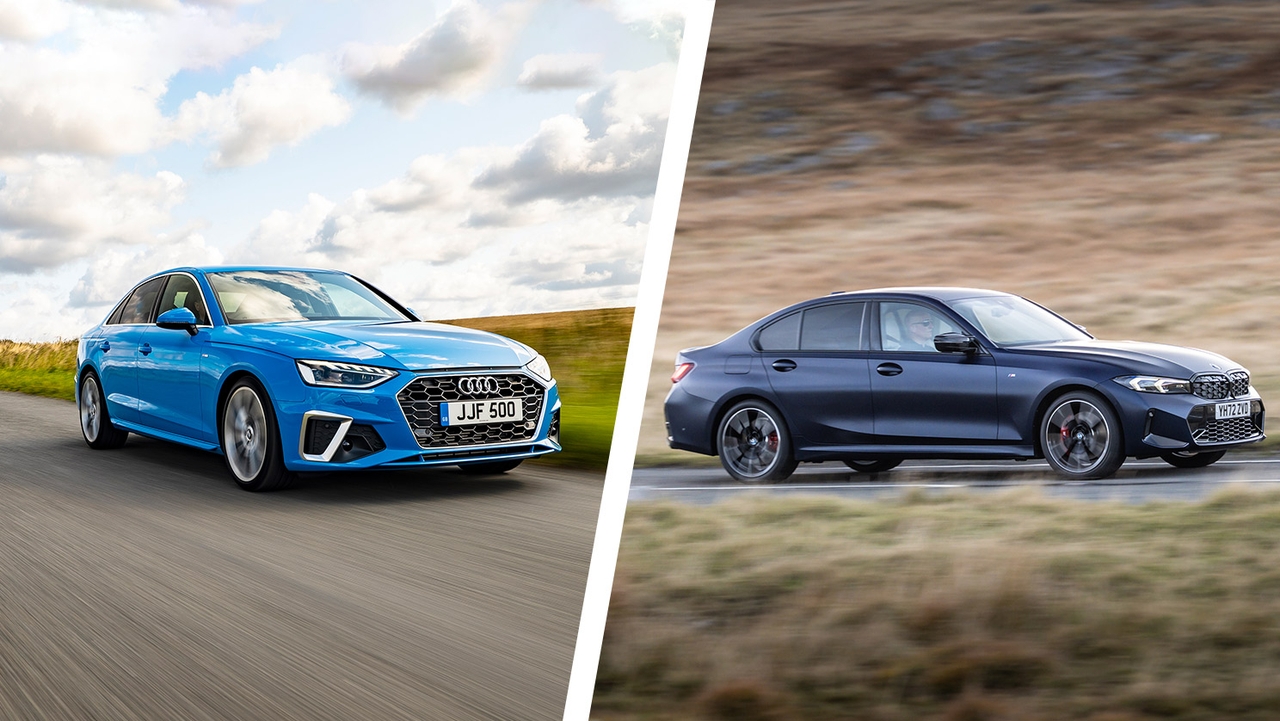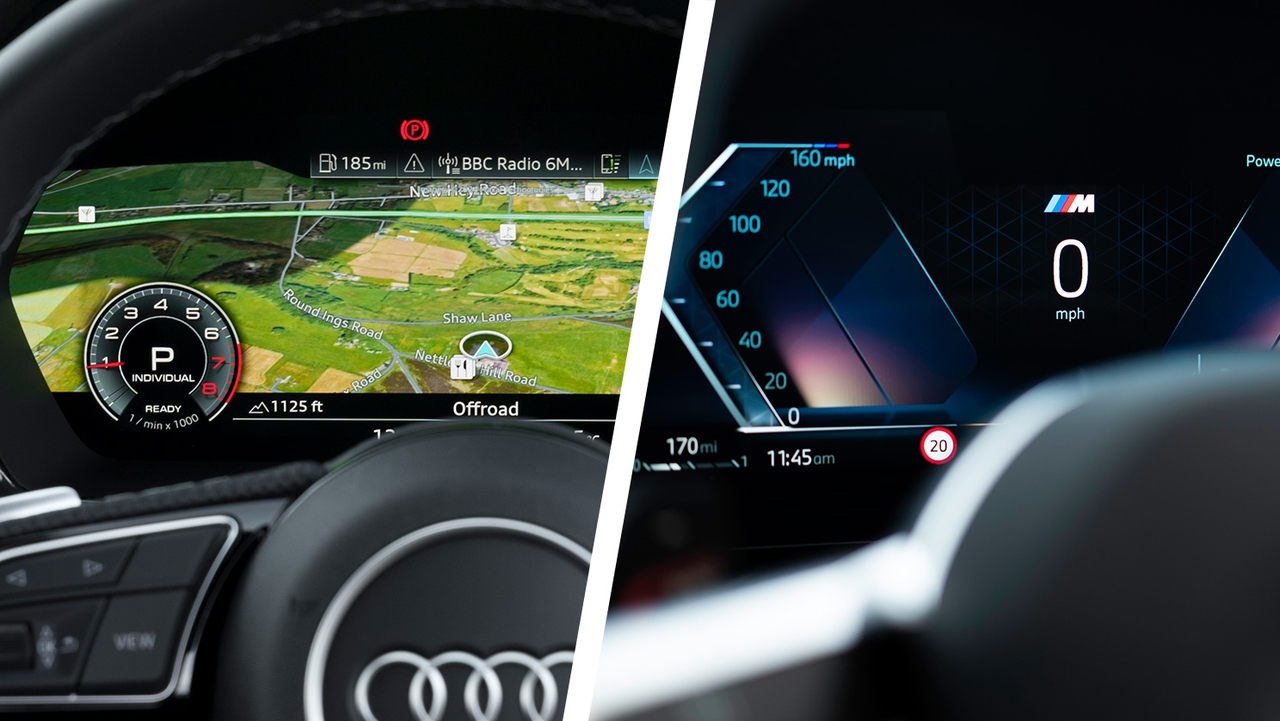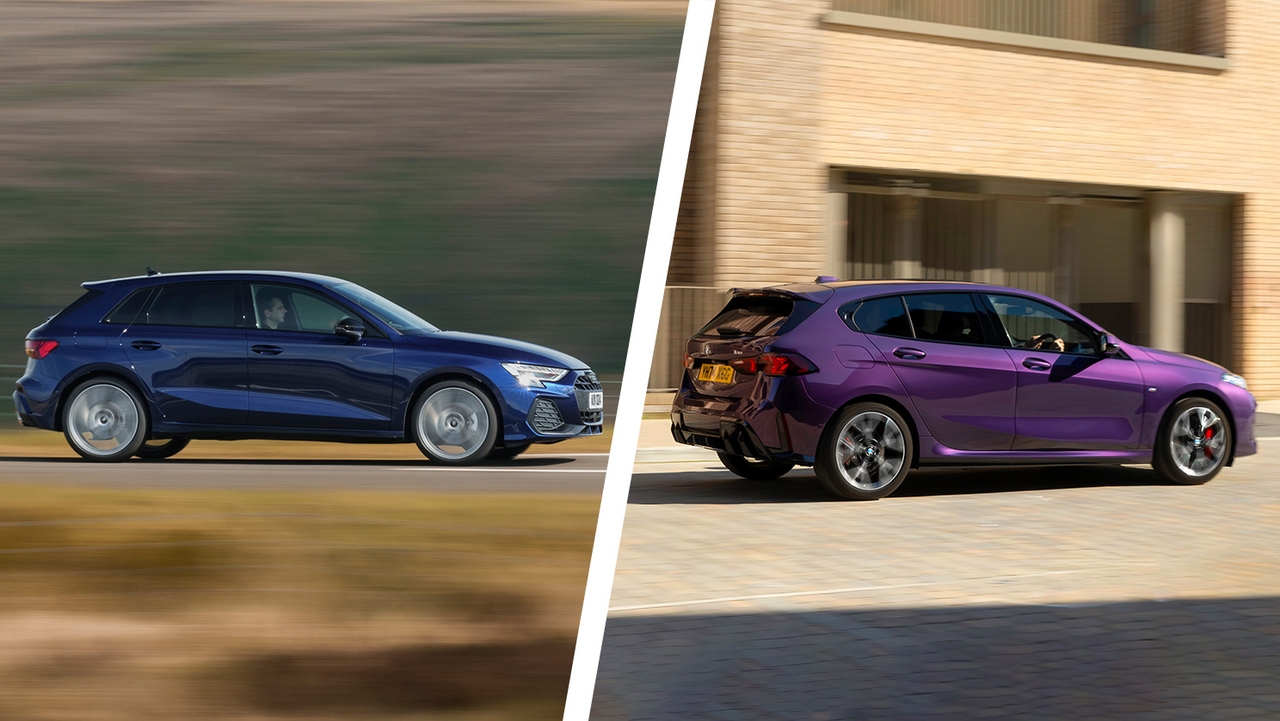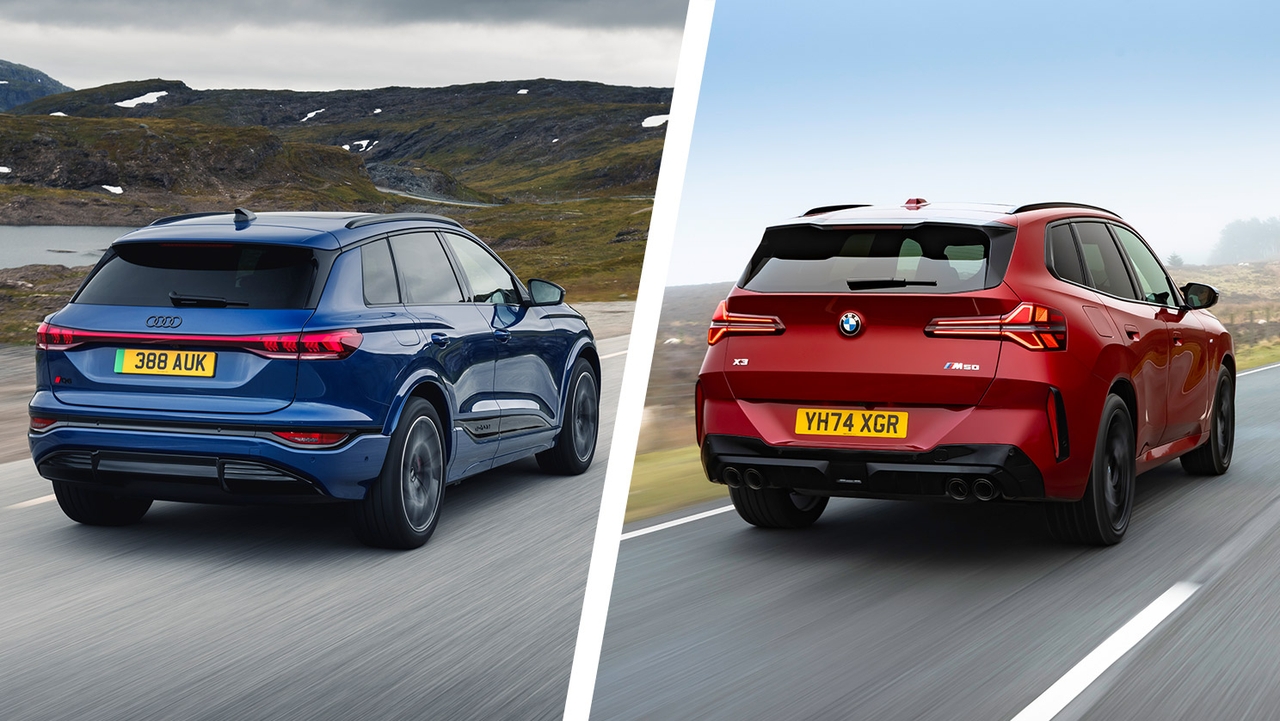Audi and BMW are obvious choices if you're looking for a car that's a cut above the rest.
Both brands deliver upmarket looks, reassuring performance and plenty of high-tech features – but they go about it in slightly different ways.
We'll compare the Audi and BMW lineups here, and point out their distinguishing features to help you choose the one that suits you best.
Audi vs BMW compared
| Audi | BMW |
Pros:
| Pros:
|
Cons:
| Cons:
|
Design

Premium German brands like these have worked hard to develop a corporate 'face' so they're instantly recognisable on the road. Audi's is defined by a wide maw-like front grille with either six or eight sides, with angular headlight units on either side. The brand was also one of the first to embrace LED daytime lighting 'signatures' and these remain a key part of the styling of its latest cars, subtly framing the main exterior lighting.
In the cabin, we reckon Audi relies a little too much on matte and glossy black trim. This can make its models feel a little gloomy, but there's no complaints over the quality of materials or their fit and finish. One aspect we think Audi generally does better than BMW is its infotainment system. The on-screen fonts and graphics are clearer, with a higher contrast thanks to their black background. Persistent on-screen shortcuts also make it fairly easy to jump between functions.

You'll know you're looking at a BMW if you spot the brand's signature 'kidney' front grilles, with beady twin-element headlights either side. The company's developed this look for decades and it's proved enduringly popular with buyers. It has evolved with the times, however, with cars like the recent 5 Series getting a more minimal, contemporary look – although the jury's still out on whether this restyling is actually successful.
Like Audi, BMW is no stranger to dark, understated cabin materials, although you'll find the odd aluminium-effect detail to liven things up. Build quality feels similarly robust as Audi, with no creaks or groans as the car goes over bumps. While Audi has mostly retained a traditional centre infotainment screen with a separate unit in a binnacle for the driver, BMW has swapped to a dual-screen dash-top pod. This setup has excellent definition but we think it isn't quite as intuitive as Audi's as there's a bigger mix of graphics, fonts and icons scattered across its menus.
Engines and driving

Audi and BMW cars are usually powered by either turbo petrol or diesel engines, with the most recent models being assisted by mild-hybrid technology to boost fuel economy. You'll also find plenty of models available with a plug-in-hybrid option, which might be a good choice for company car buyers. Currently, neither brand offers a full, self-charging hybrid like you'll find from Toyota, Renault or Honda, although they are starting to add more fully electric models to their lineups.
You'll generally find a decent amount of power in both brands' cars. That being said, some more affordable Audi models are offered with either a 1.5 or 2.0-litre petrol branded 35 TFSI – this can feel a bit underpowered in a larger car like an A4 saloon, for example, so we'd be tempted to stretch to the punchier 40 TFSI or one of the diesel alternatives. By comparison, every entry-level BMW we've tried feels punchy when you floor the throttle. Most Audi and BMWs are automatic, but some entry-level cars use a manual gearbox and we've found Audi's manual tends to feel slicker and more satisfying than BMW's occasionally rubbery-feeling shifters.
It's hard to make a sweeping characterisation of either brand's handling as they both offer such a broad range of vehicles. Nevertheless, we've found Audis tend to be set up with lighter controls than their BMW counterparts. This can make them a fraction easier to drive on a regular commute, but robs a little of the driver engagement that tends to make BMWs more fun on twisty roads. Comfort varies from model to model so neither brand definitively wins this category, although it's best to avoid optional large alloys if ride quality is a concern for you.
Price

With everything else being so keenly competitive between these two brands, it should be no surprise that prices for equivalent models are very close – often within £1,000 of each other. This parity remains even once the models hit the used market, with very little to split the two brands once they've covered a few thousand miles. You should also budget a little more for maintenance than you might for a car from a mass-market brand as parts and labour are likely to cost a little more for both Audi and BMW models.
It's worth noting that, if you simply want a premium-badged car, then Audi offers a few more entry-level models than BMW. The Bavarian brand doesn't offer direct competitors to the Audi A1 hatchback or Audi Q2 SUV, instead fielding cars from its sub-brand – the Mini Hatchback and Mini Countryman respectively – as rivals.
Reliability
Most recent reliability surveys have scored BMW slightly higher than Audi for dependability, although the latter doesn't tend to perform too poorly. Broadly speaking, many premium brands fall a bit short in these surveys as a result of the sheer number of features they cram on board, compared to a cheaper, simpler car with less to go wrong.
Both brands offer the industry-standard three-year warranty, which protects you from the cost of mechanical or electrical failures as a result of manufacturing defects. Drivers with very high mileages should note that BMW's three-year coverage has no mileage limit, while Audi's is unlimited for the first two years, with a 60,000-mile limit applying in the third year. Whether you're buying new or used, you have the option to add an extended warranty if you want to increase your coverage.
Which is best?

There isn't truly a 'best' option here, especially as Audi and BMW cars are so fiercely benchmarked against one another. That said, we reckon Audis will generally suit a buyer who's looking for a comfortable, easy-to-drive car with all the latest tech. BMWs offer many of the same virtues, of course, but they trade that easygoing driving experience for one that's a little more active and engaging, which keener drivers might prefer.
Find out what specific models are like to live with by reading our Audi reviews or our BMW reviews. Once you've found the one you like best, check out the savings available by shopping used Audi or used BMW cars at Motorpoint.

































